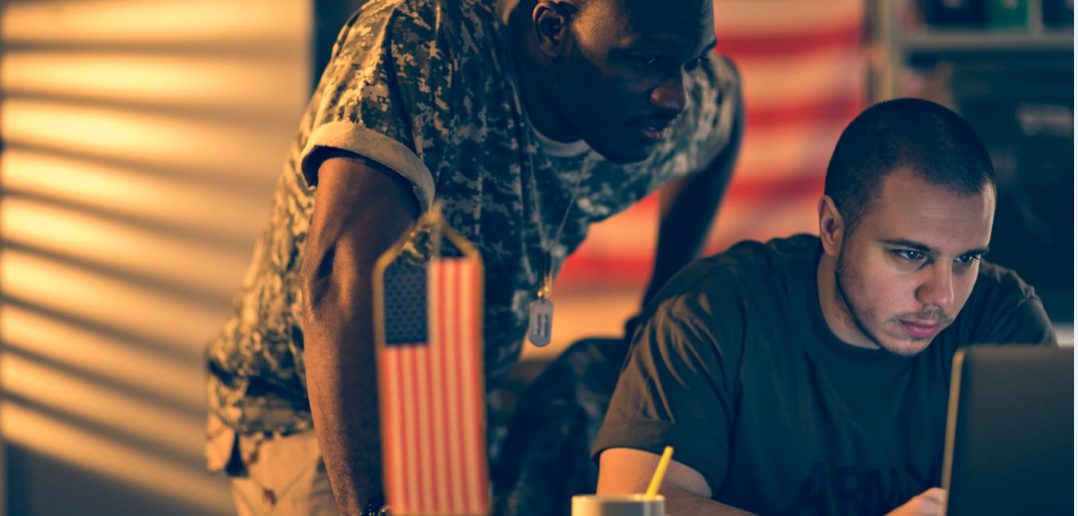As a former intelligence analyst, I can't help but breathe a huge sigh of frustration. The special AI "task forces" and their massive budgets are great, but it's time to get honest about the rest of the military. Ask any every day soldier, sailor, airman or Marine their opinion of how things run on a daily basis and you will hear complaints about pay, lost orders or awards, broken gear, outdated software or perhaps the blue screen of death that happens when Outlook is open alongside too many websites.
Bottom line: all those flashy AI algorithms being touted as perfect for federal use are not going to run on the outdated infrastructure on which a majority of the military still operates.
Force readiness for AI
That doesn't mean that AI isn't a good fit or shouldn't be pursued. But it does mean that AI success requires a force readiness approach. First, AI isn't new and it isn't new to the government or the military. Marketing hype around the term has experienced a surge lately but the fact that something wasn't tagged as artificial intelligence historically does not take away the fact that it was actually AI.
Groups and organizations lauding artificially intelligent solutions are popping up everywhere with promises to create the next battlefield advantage using next generation weapons, gear, or satellites. The term artificial intelligence (AI) splashes the headlines with promises that we're moments away from revolutionizing the battlefield.
Despite the hype, AI is simply a field of science that trains systems to perform some human task through learning and automation. There are varying degrees of sophistication but most of the data mining, network analysis and mapping technology used over the past decade or more have all been forms of AI. Weapons systems and combat vehicles have been leveraging AI for many years as well. So don't let the noise change the focus from the mission need.
Those men and women on the front lines need their supporting forces to be trained and armed with the appropriate technology to support the advances being operationalized on the battlefield. If we look specifically at the intelligence arena, I would argue that the vast majority of military intelligence analysts are still using the same products and systems from 10-15 years ago.
Efforts around collecting intelligence are ripe for sophistication, but what about the analysts that have to sift through and make sense of that additional data? How has their training changed to account for a more technologically advanced battlespace? How have their products and solutions integrated requirements and workflows with real time information to truly augment their efforts?
The majority of data mining and visualization tools on the market have flashier interfaces than we saw a decade ago, but the true sophistication of what the vast majority of military intelligence analysts have been offered doesn't really reflect the decade of advancements seen in the commercial market.
13 ideas for AI in military intelligence
This is the humble opinion of a former Marine Corps analyst who has worked with and trained all-source and targeting analysts across the Marine Corps, Navy and Army. Reflecting on the teams I've worked with and the analysts I've trained, I would expect AI conversations around military intelligence to include the following topics (in no particular order):
- Use natural language processing (NLP) and machine learning to automatically classify and match incoming data to indicators and warnings being monitored. Provide alerts on trending topics, keywords or themes that may indicate emerging tactics, techniques and procedures.
- Display both a geographic and temporal representation of multi-intelligence data with a natural language generated summary of the data. Include the ability to break data into individual entities as needed and ingest analyst annotations into the automated summary.
- Automatically map finished intel products to the priority intelligence requirement they help answer with automated caveat classification of documents tied to user permissions. Include smart search capabilities to that repository so analysts can find relevant products more efficiently (again using NLP and machine learning).
- Monitor human developed courses of action (COAs) beside computer generated courses of action including the criteria for suitability, feasibility, acceptability, uniqueness and completeness. A machine will see information differently than its human counterparts and may identify behavior idiosyncrasies present in data that human analysts may miss due to the sheer volume and complexity of reporting that an intelligence analyst is presented with. Likewise, humans have strengths of experience, intuition, psychology, rules of engagement and the context of real world dynamics that a computer generated COA cannot interpret. Comparing both options helps find the best COA.
- Capture workflows and product development in a shared space so knowledge gaps are reduced between shifts or rotations. Use automation to track knowledge gaps and alert users to update analysis and finished products when significant knowledge gaps are filled.
- Automatically tag/map intelligence gaps as new information comes in and alert users to the new information.
- Measure impact of operational intelligence (and any associated collections or requests that contributed to that intelligence) by automating inputs and processes that would serve as operational measurements.
- Move beyond just tagging data to highlighting impactful anthropological or psychological elements that may impact behavior within the area of responsibility.
- Add analytic rigor to the intelligence analysis process and automate a measure of rigor and objectivity into levels of confidence tied to intelligence assessments.
- Add cognitive search into the massive data repositories analysts are required to sift through to move beyond keyword search and enable contextual search at an enterprise level.
- Provide in-depth training on AI systems and set the standards by which the technology should augment the human analytic process but by no means replace the analyst behind the screen. In short, tie the technology into existing workflows and adjust workflows to account for technological innovation.
- Invest in both garrison and tactical systems and infrastructure that are capable of running and sustaining the increased compute power that comes with training and deploying AI programs.
- Conduct these initiatives in parallel with operations to ensure red and blue force efforts are complimentary and requirements are aligned by having an algorithm alert to discrepancies or gaps in the operational plan and the intelligence needed to execute it.

This list should be seen as a starting point. It's just what flows off the top of my head for military intelligence. There are similar adjustments that need to be made in human resources, training, legal, supply, transportation and more. AI can span across data management and governance initiatives, predictive maintenance, supply and inventory forecasting, optimizing tactical and technical proficiency and even using prescriptive analytics to better inform the selection of individuals for school seats and career progression. And more AI use cases could easily be found in monitoring command climate, aligning training, certification and deployment requirements and improving physical fitness and mental health.
You don't have to be a part of a high profile AI initiative to find value in the science for nearly all areas of the military. We need the whole force to have the technical advantage on the battlefield and that means AI must become a force readiness initiative. It's all about augmenting human efforts across battalions, regiments and divisions to raise the readiness levels of the entire force. Our soldiers, sailors, airmen and Marines inside the wire should have the knowledge, technical acumen and agility to support all of the operations and technology our troops outside the wire are running.


16 Comments
LOVE this! Especially the idea of mapping finished products to PIRs/IRs! What you have conveyed here totally reflects my experiences in the Miltary and working with Intelligence and Federal Agencies. Thank you for this, Mary Beth!
The article is very important and can be positively utilized for peace. However there are people that use the technology to destroy peace.
LOVE this! Especially the idea of mapping finished products.
A machine will see information differently than its human counterparts and may identify behavior idiosyncrasies present in data that human analysts may miss due to the sheer volume and complexity of reporting that an intelligence analyst is presented with. Likewise,
Great, article is worth reading.
Excellent Idea of mapping finished products, this is great effort to describe the working of military forces and Intelligence Agencies and federal Agencies.
Hi, Mary Beth Ainsworth
We are the three students of B.I in NCBA&E Multan Campus.
1. IRFAN ABBAS
2. RAFAY MEHDI
3. ZEHRA IRUM
Especially AI is nowadays most important for security solution in miltary. We can use the Natural Language Processing (NPL) for warning and indication of unwanted blasting materials wording and seceratelly generated codes for on unethical movements. We can control these with following methos
1. Spoken diologue system and convergence agents.
2. Machine reading
3. Social Media Mining
4. Analysis and Generation of speaker state.
NCBA&E MULTAN
Group
M Ahsan Akber
M shahzad
M IMRAN
I do not think that comparisons between people and intelligent machines are really helpful. When we get into comparisons, people can only lose out. Ultimately, they lead to the loss or downgrading of the uniqueness of individuals. Instead, I think it makes more sense to consider AI applications as a separate form with which we are only partially competitive. here are varying degrees of sophistication but most of the data mining, network analysis and mapping technology used over the past decade or more have all been forms of AI. Weapons systems and combat vehicles have been leveraging AI for many years as well.
Nice blog Mary Beth and takes a straight forward approach to AI. Thanks!
Happy to see this blog Mary Beth! You make some excellent points. Recommend checking out some of the innovation happening at Defense Digital Service, a "swat team of nerds".
https://breakingdefense.com/2016/09/ash-carter-wants-you-for-the-defense-digital-service/
Central intelligence training should have engineered bodies and should not only have a dimension ran off thought but use said persons thought process to command military
Very cool - Your #1 is definitely my #1 as well, incorporating NLP into an AI application to enhance readiness and responsiveness. This applies to anti human trafficking efforts as well. Thanks for sharing.
Clarifying people’s role and place in tomorrow’s industries is an essential factor to foster corporate resilience.
For a single reason: the necessary convergence of people, process and technology.
Thank you, Mary Beth Ainsworth, for this illustration drawn from your military experience.
Drones could be developed to disable stationary nukes without the enemy knowing. By proxy with an emp or by getting within the shell of a ballistic weapon stationed on a vehicle. A three stage drone. One to get it there past enemy lines. The second to lock onto an enemy missile. And the third being comprised of nanobots to compromise the missile or warhead. In effect, to compromise the integrity of the weapons delivery system without raising alarm. A sleeper drone is a second option. Paramount would be ithe 3 stage drones stealth capability, and its resilience.
Each stage of the drone being stealthier and smaller than the vehicle delivery drone.
Can we develop a stealth drone that is carried by another stealth drone into enemy territory for the sole purpose of releasing a final 'mission stage' stealth nano drone that can attach to a stationary intercontinental missile? A nano sleeper drone in situ with one mission critical goal - to disable the warhead delivery system in a future combat scenario. A multi stage drone system designed solely to disable intercontinental missiles without the enemy knowing. Through EMP, detonation or melting navigation circuit components within the missile body. Even deploying a layer of nano material on the surface that overheats the missile in flight. A material not noticeable to the human eye.